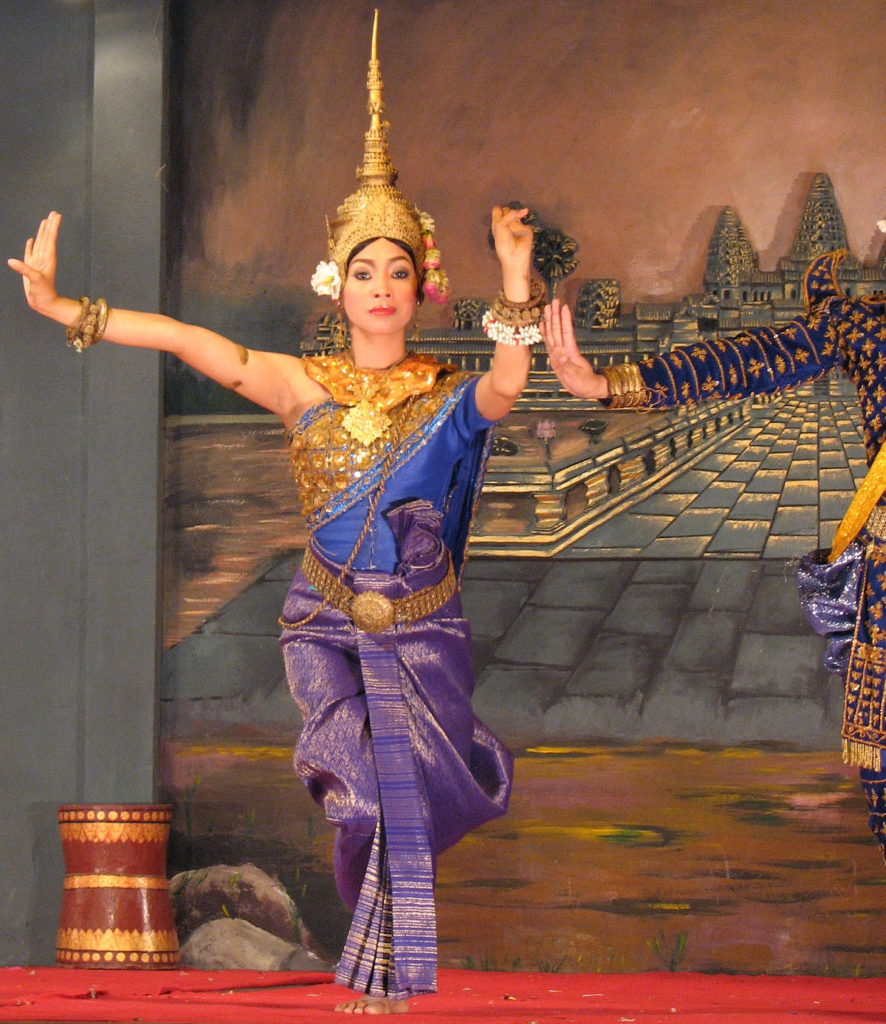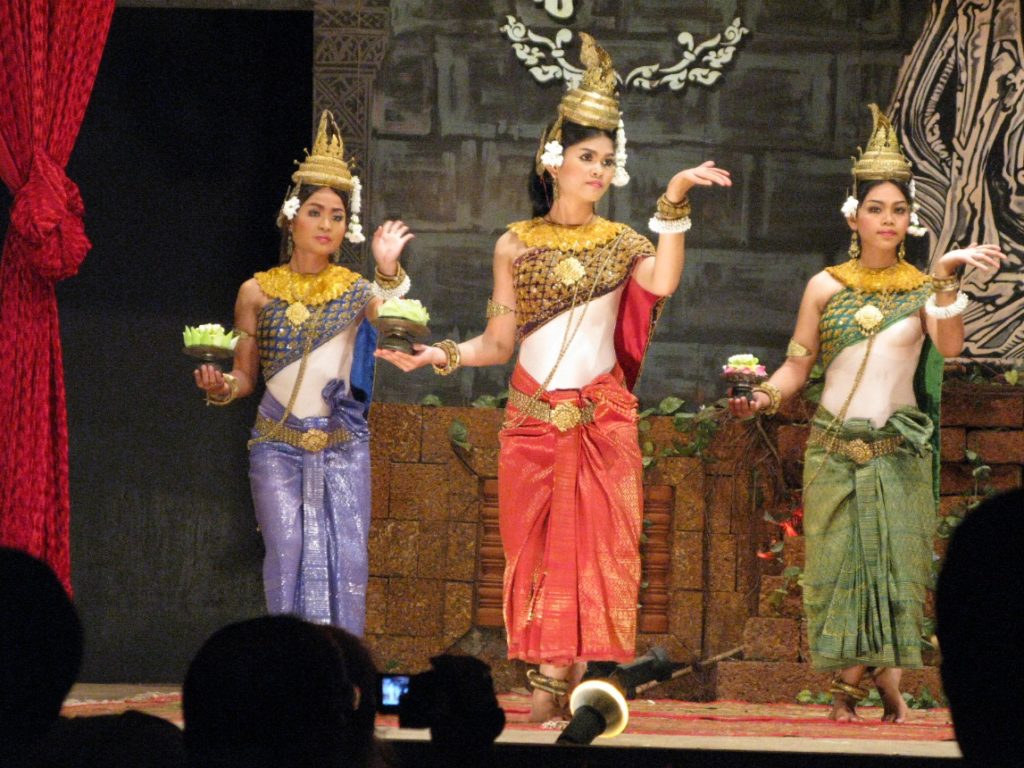Sampot is a traditional dress of Cambodia which is like the traditional dress of neighboring Laos and Thailand. Sampot is look more like a pant than a skirt and that is the distinctive feature not found in any country costume. Both men and women in Cambodia can dress Sampot costume. To get more information, you can click: Indochina travel Cambodia
Sampot was created under the Funan dynasty when a Cambodian king ordered his people to wear Sampot as requested by the Chinese ambassador. Since this dynasty, silk weaving is an indispensable part of Cambodia’s longstanding culture. Sophisticated weaving methods and subtle patterns are developed. Particularly, Cambodians from this day have possessed their own non-patterned and cross-woven method, although there is currently no clear explanation for the application of this technique. Silk Sampot is used as family heirlooms in weddings, funerals, as well as for decoration in temples.
Sampot is a traditional Cambodian cloth and quite like the traditional costume of neighboring countries like Laos and Thailand, but each garment has its own unique features. The traditional Sampot is a long, rectangular piece of cloth that is wrapped around the waist covering the abdomen, legs and is tied in front of the abdomen. Upper body, traditionally, Cambodians will use Chang Pong – a cloth of any color to cross one shoulder and cover the woman’s chest, leaving only a small portion of the abdomen to honor the charm of Asian women in general and Cambodian women in particular. Cambodia travel tours
In Cambodia, Sampot is divided into various categories with a few characteristics. Sampot Chang Kben is not like the usual Sampot but rather a rectangular trouser about 2.7 meters long and about 1-meter wide. Almost all Cambodian women wear Sampot Chang Kben on special occasions or events.
Sampot Phamuong is a very popular weaving fabric of Cambodia. Currently, there are about 52 distinct colors used on Sampot Phamuong. Even when luxury Sampot Phamuong models use up to 22 different needle stitches to create, accompanied by countless flower and geometry patterns. The best quality silk used by the Cambodian people is the famous golden silk in the temple country.
Sampot Hol is another famous fabric in Cambodia with two basic types: one is a conventional technique and the other is cross-knit weaving. The Sampot Hol dress is influenced by Indian patola silk fabrics and has undergone a period of development of patterns and knitwear that make up today’s subtle Hol style. This type of sampot consists of 200 patterns with yellow, red, brown, blue and green colors in the motif of flowers and animals.
In addition to the three popular types of sampot, there are other less popular sampot types but still unique in their own way: Sampot Tep Apsara, Sampot Samloy, Sampot Chorabap, Stamppot Samiot, Sampot Seai Sua and Sampot Lberk, Sampot Alorgn.
Sampot was ingrained in the Cambodian subconscious. Even when French brings Western-styled costumes to Cambodia, local people continue to wear Sampot. Royal and government officials use Sampot Chang Kben along with a formal coat. Today, Cambodian people also wear Sampot Chan Kben and Sampot Pamung styles on their special occasions. The poor Khmer people on rural area always feel comfortable wearing Sampot instead of western styles. The fabric materials used by the poor people is not hand-woven silk, but batik fabrics which is imported from Indonesia.
Anyway, for all people living in Cambodia, Sampot is always considered a beautiful national dress.
See more:
The Biggest Water Festival in Cambodia
Moon festival in Cambodia- an unforgettable experience
Asia Travel Lover









